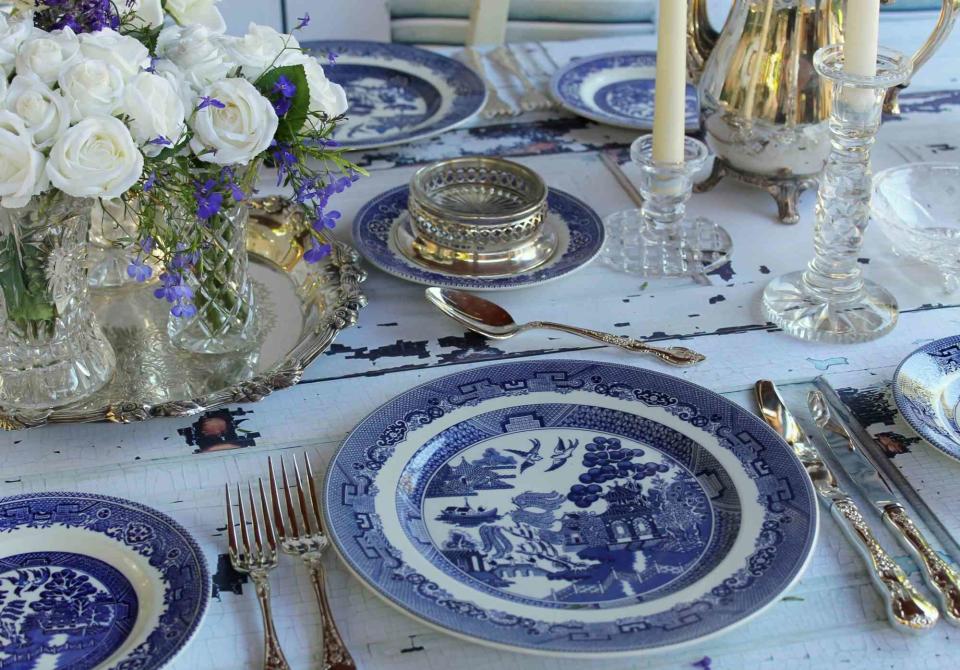Why Southerners Will Always Love Blue Willow China
If it's good enough for Aunt Bee, it's good enough for us.

Whether you're a serial Spode collector or a Wedgwood faithful, it's no secret that Southerners love their china. We're as loyal to our patterns as we are to our football teams and our families' cornbread recipes (the sugar vs. no sugar debate is very real). For some of us, it's because a certain pattern reminds us of Sunday dinners at our grandparents' houses. For others, it's because we believe that our patterns reveal a lot about our personalities. But whatever camp you're in, there are few patterns as widely loved as Blue Willow china.
What Is Blue Willow China?
While the pattern itself needs no introduction, its history may require a quick refresher. Designed to replicate the imported Chinese porcelain that was so popular at the time, the Willow pattern was first created in England in 1780 by potter Thomas Turner and engraver Thomas Minton. Unlike the pricy imported porcelain, the Brits' take was essentially an early version of transfer-ware, meaning that the design was printed onto the earthenware, rather than hand-painted, making it much more affordable to produce.
The pattern was eventually churned out by hundreds of makers all over the world, from Puerto Rico to Poland, but it wasn't actually made in China—the country that inspired it—until the 1980s.
What Is Special About This Pattern?
The Blue Willow china pattern also was beloved by one of our favorite Southern characters. Eagle-eyed viewers of The Andy Griffith Show will tell you that Aunt Bee herself used Blue Willow china. And if that lovable paragon of Southern hospitality had a soft spot for the pattern, we do too.
If you look closely, the pattern also conveys details from a legendary story of star-crossed lovers. According to the story, a wealthy official had promised his daughter Koong-se in marriage to a nobleman, but Koong-se had fallen in love with her father's clerk, Chang. The doomed lovers escaped across a bridge and onto a boat, eventually settling on a distant island. When her father sent his guards to take revenge, the lovers perished but were immortalized by the gods as doves.
Where Can You Find Blue Willow?
Blue Willow china's accessibility remains one of its undeniable perks. While you can scoop up vintage pieces on sites like Etsy and Chairish (and even find some pricier versions popular with collectors), you can also score new versions of the china from Amazon. And at less than $60 for a Johnson Brothers' four-piece place setting, it's an approachable and worthy gift option for a host just starting to build their collection.
Blue Willow china is versatile, easily dressed up for a holiday dinner and equally appropriate for Sunday morning grits. When paired with white, blue is practically a neutral, so it works in just about any tablescape you could dream up. But if you're not Team Blue-and-White, there's still a Willow pattern for you: It also comes in pink, brown, green, and the occasional multicolored version.
Of course, it's not just Southerners who have a soft spot for the blue-and-white wares. For the pattern's most invested fans, there's an International Willow Collectors group, which hosts an annual convention for its members. There is a small fee to join, but meeting friends who love your china pattern as much as you do? Well, we'd say that's priceless.
For more Southern Living news, make sure to sign up for our newsletter!
Read the original article on Southern Living.